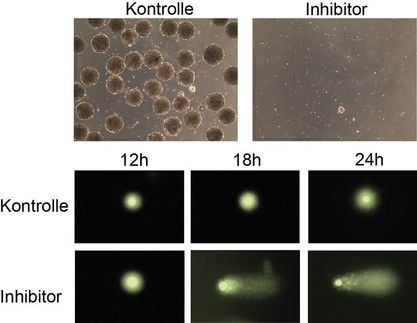Metal atom dictates the structure: new concept for the construction of enzyme inhibitors
Advertisement
Complex natural products usually adopt precisely defined spatial structures that are of critical importance to their biological function. A substrate must fit precisely into the "pocket" of an enzyme in order to be converted. The same is true of drugs meant to influence the function of enzymes. The biggest challenge in this is to develop effective methods for the synthesis of agents with tailored three-dimensional structures. A team of British and American researchers headed by Eric Meggers is using metal atoms to give their agents the right shape. They have now successfully used this concept to develop a specific inhibitor for protein kinase Pim-1 based on a ruthenium complex.
Protein kinases play an important role in a large number of cellular regulatory mechanisms. The natural compound staurosporine is an effective inhibitor for the adenosine triphosphate (ATP) dependent protein kinases because it fits precisely into the ATP-binding cavity of these enzymes. Meggers and his team at the University of Pennsylvania (USA) and Oxford University (UK) used the structure of staurosporine as the starting point for the development of a more simply constructed metal-containing inhibitor. Staurosporine consists of a flat aromatic ring system and a sugar component. The scientists replaced the sugar with a ruthenium atom bound to two ligands. The ring system, which was slightly altered, also binds to the ruthenium as a ligand. Like a clamp, it surrounds the metal from two sides. Careful selection of the two other ligands-carbon monoxide and an five-membered aromatic ring-allowed the researchers to give their ruthenium complex a form that mimics the spatial structure of staurosporine and also fits into the ATP-binding cavity.
The new ruthenium complex exists in two forms that are mirror images of each other. Tests with more than 50 different kinases showed that the "left-hand" version very specifically inhibits an enzyme called Pim-1 kinase-more than two orders of magnitude more effectively than staurosporine. Pim-1 kinase participates in the regulation of cell division: its inhibition could be advantageous in fighting certain tumors.
Original publication: Eric Meggers; "Ruthenium Half-Sandwich Complexes Bound to Protein Kinase Pim-1"; Angewandte Chemie International Edition 2006.




















































